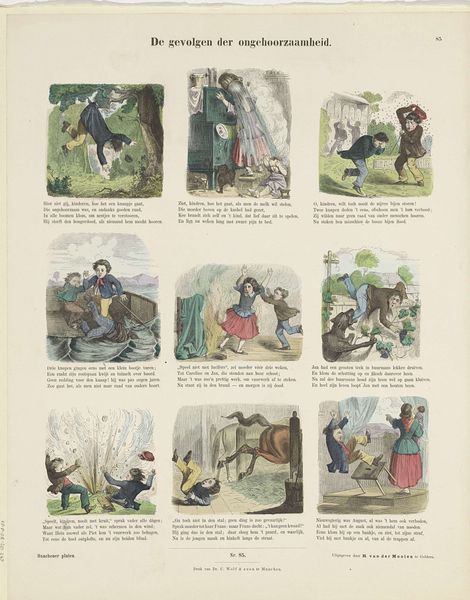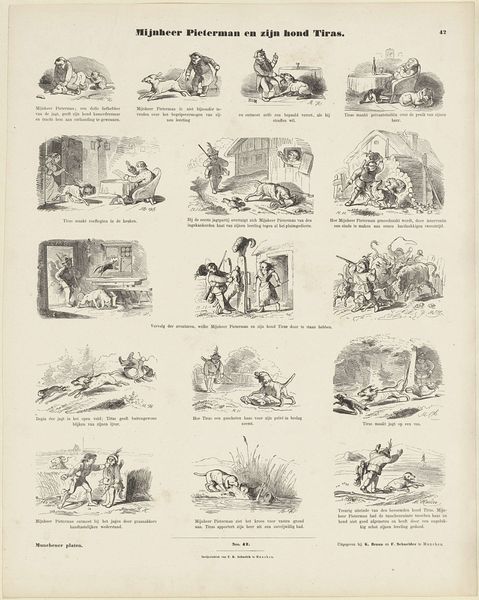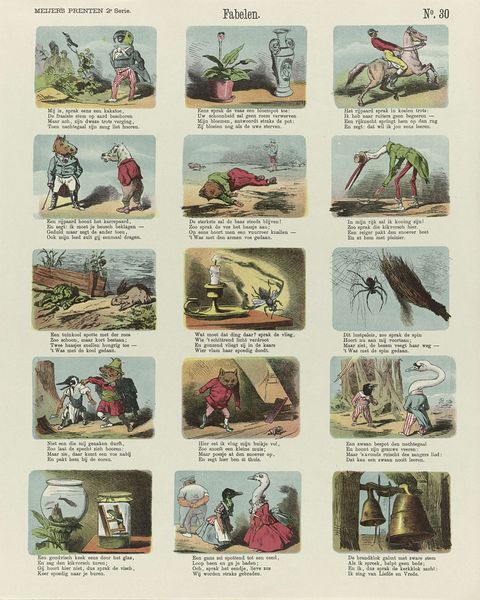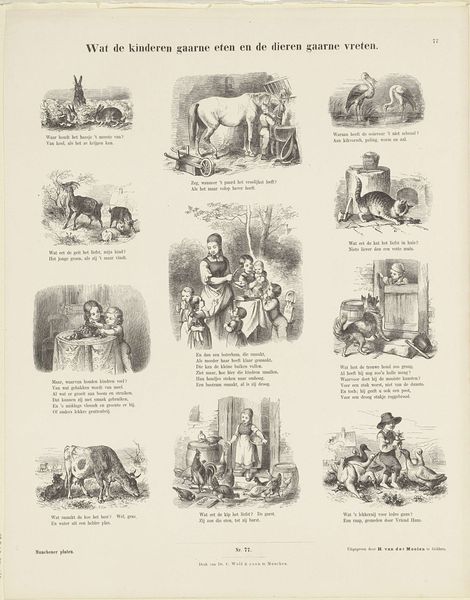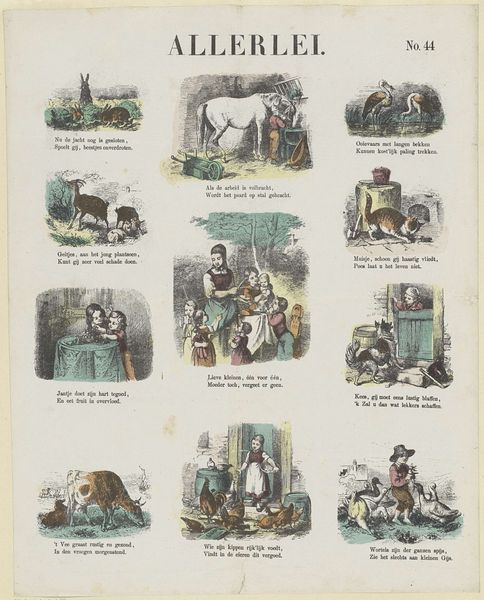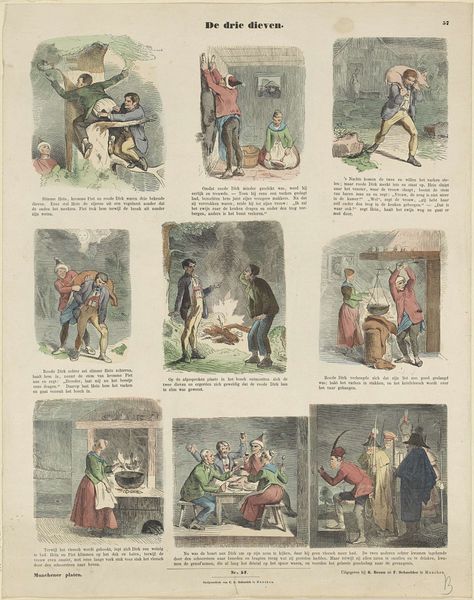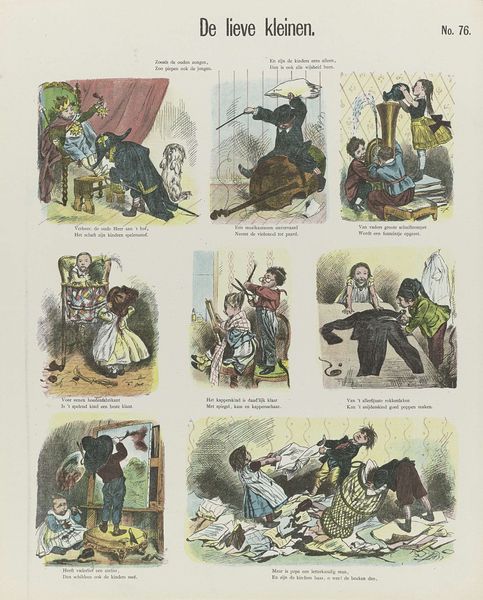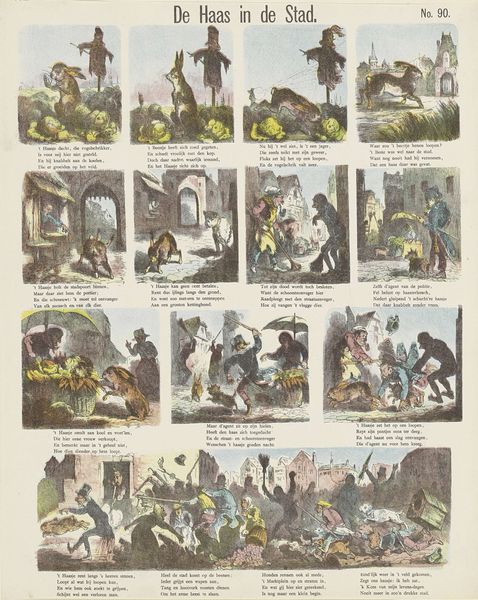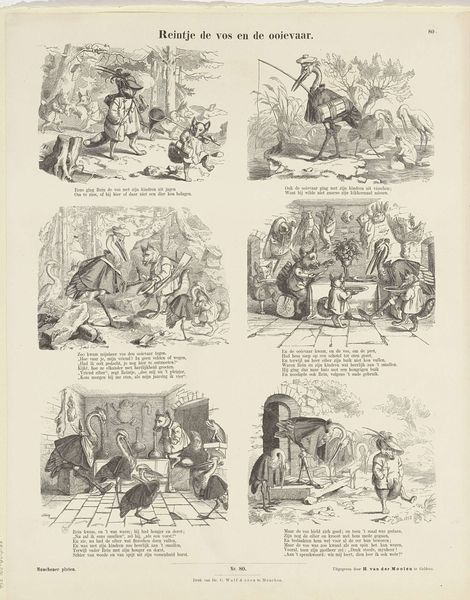
print, watercolor
#
narrative-art
# print
#
watercolor
#
folk-art
#
watercolour illustration
#
genre-painting
#
watercolor
Dimensions: height 441 mm, width 349 mm
Copyright: Rijks Museum: Open Domain
Curator: This watercolour and print, titled "Klein-duimpje," created sometime between 1843 and 1920 by Oswald Adalbert Sickert, offers a glimpse into a world of narrative and genre scenes. It currently resides here at the Rijksmuseum. What are your initial thoughts? Editor: Well, my first impression is one of charming unease. The vignettes create a sense of fractured storytelling, and the subdued palette contributes to a slightly unsettling mood despite the familiar fairytale subject matter. Curator: Let’s consider the materiality. As a print with added watercolor, it occupies a space between mass production and individualized craft. The layering of these two mediums creates a tension. Editor: Precisely. This tension mirrors the broader socio-economic narratives embedded in fairy tales like “Klein-duimpje”—the tensions between survival and exploitation, resourcefulness and vulnerability, that often reflect the realities of marginalized communities. The choice of a popular tale reinforces a shared understanding of societal struggles. Curator: And Sickert's process further underscores this, doesn't it? Think about the act of creating multiple prints from one drawing. Each version becomes an original artwork and part of a larger production of illustrations destined to the cultural production that can reach many. Editor: Right. Furthermore, who was buying such artwork at the time? How was it circulated, consumed, and understood across different audiences? The piece offers a historical snapshot of cultural production in relationship to power dynamics. Who has the access and ability to shape cultural values through these sorts of stories? Curator: These images would most likely accompany the book. So, think about labor of storytelling as production that connects cultural, symbolic, material, social and economic power. Editor: A key element in unpacking visual cultures indeed. The narrative is more than a story, it reveals and solidifies power structures related to identity and politics. Curator: It is very easy to think about artistic expressions or literature from different classes during industrial revolutions, yet we forget how illustrations help construct our thoughts in childhood. Editor: Exactly. Thanks to a detailed consideration of medium and circulation we gain a far better picture of the socio-political elements. Curator: Yes, and, in closing, examining "Klein-duimpje" not just as a depiction but as a layered object helps reveal a rich tapestry of labor, social narratives and material reality. Editor: Ultimately the social and cultural work art does matters even more than mere description of it. Thanks to you for walking me through it today!
Comments
No comments
Be the first to comment and join the conversation on the ultimate creative platform.

